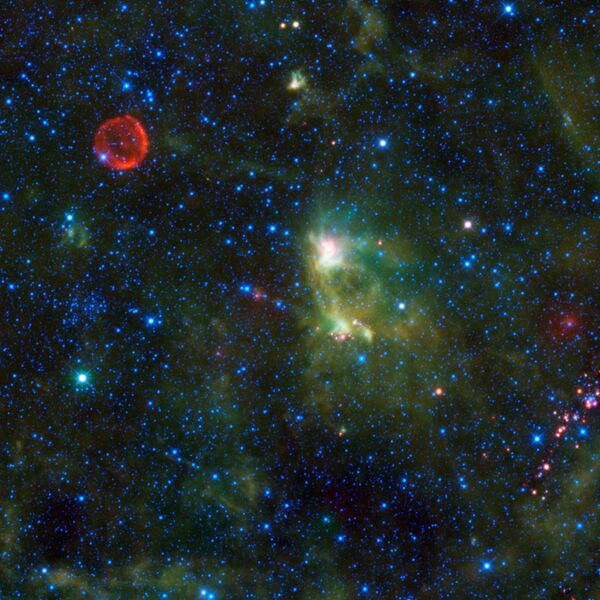MOSCOW, August 29 (RIA Novosti) -Astrophysicists from the Moscow-based Space Research Institute (IKI) have confirmed the theory that Type Ia supernova stars emerge as a giant thermonuclear explosion of white dwarfs, in a study published by the Nature scientific journal.
The International Gamma-Ray Astrophysics Laboratory, or INTEGRAL, detected “56Co lines at energies of 847 and 1,238 kiloelectronvolts and a gamma ray continuum in the 200-400 kiloelectronvolt band from the Type Ia supernova 2014J in the nearby galaxy M82. The line fluxes suggest that about 0.6 ± 0.1 solar masses of radioactive 56Ni were synthesized during the explosion,” a statement published on Nature’s website by Evgeny Churazov, the study’s leading author and member of the Russian Academy of Sciences, said.
A Type Ia supernova was thought to be a thermonuclear explosion of either a single carbon-oxygen white dwarf or a pair of merging white dwarfs, but as its gamma ray has never been detected before, the theory of their thermonuclear nature remained unconfirmed.
On January 15, a supernova of this type exploded in the M82 galaxy – a starburst galaxy located about 12 million light-years away from Earth in the constellation Ursula Major. The gamma ray from this explosion was detected by INTEGRAL.
“We were very lucky, especially because the scientists of the Space research Institute had INTEGRAL orbital observatory at their disposal,” Rashid Sunyaev, IKI’s leading astrophysicist, said.
He thanked Russian scientific committee of INTEGRAL for their willingness to interrupt the scheduled research to spend “1 million seconds of Russian observance quota on observing this supernova.”
INTEGRAL is an extremely sensitive space telescope that was launched from Baikonur Cosmodrome in 2002. INTEGRAL is a joint project of the Russian Space Agency (Roscosmos), the European Space Agency (ESA) and NASA.


